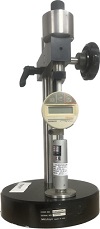Durometer Explained
Shore A, Shore B, and Shore D in Seals
O-rings are essential components used for sealing applications in various industries. Understanding key terminology related to durometer and Shore hardness is crucial when selecting the correct O-ring material. In this article, we will delve into the meaning of these terms and their significance in relation to FKM (fluorocarbon rubber), urethane, and NBR (nitrile butadiene rubber) materials.
Durometer is a measure of the hardness of an elastomer material, such as rubber. Shore hardness is the most commonly used durometer scale, developed by Albert F. Shore. It quantifies the hardness by measuring the resistance to indentation. The Shore hardness scale consists of different scales, including Shore A, Shore B, and Shore D.

Shore A durometer measures the hardness of relatively soft elastomers, particularly rubber materials. It has a scale ranging from 0 to 100, where higher values indicate a harder material. O-rings made from materials like NBR are typically measured using Shore A durometer. For instance, a Shore A durometer reading of 70 indicates a relatively hard material.
Shore B durometer is used to measure the hardness of elastomers that are slightly harder than those measured with Shore A durometer. It also has a scale from 0 to 100, with higher values representing increased hardness. However, Shore B durometer is less commonly used for O-rings, as materials like FKM and NBR generally fall within the Shore A measurement range.
Shore D durometer measures the hardness of rigid materials, including hard rubbers, plastics, and thermoplastic elastomers. It has a scale ranging from 0 to 100, where higher values indicate greater hardness. Although Shore D durometer is not typically used for O-rings, it can be relevant when evaluating materials like urethane, which can have higher hardness compared to traditional elastomers.
Understanding durometer and Shore hardness scales is crucial when selecting the right O-ring material for specific applications. Shore A durometer is commonly used for measuring the hardness of FKM and NBR O-rings, while Shore B and Shore D durometers are more relevant for harder materials like urethane. By considering the appropriate hardness for each material, businesses can ensure the selection of O-rings that offer optimal sealing performance, durability, and resistance to specific operating conditions.
